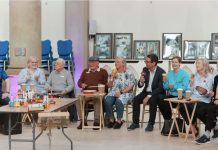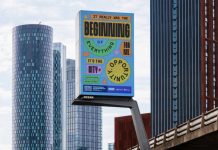
An Arts and Craft’s doctor’s house in Ancoats and an Edwardian Bank in Heywood are among the many captivating historic sites listed this year by Historic England
across the North West which have been added to the National Heritage List for England (NHLE) over the past year.
The striking red brick Arts and Crafts house rebuilt as a doctor’s surgery in 1887, to serve the health care needs of the working-class community in Ancoats, the world’s first industrial suburb.
Now at the heart of Manchester’s city centre, Ancoats grew from a small rural village to play a hugely significant role in the industrial revolution.
Highly innovative steam-powered textile factories sprang up in the area from the late 18th century, after the construction of the Rochdale canal, followed by foundries, glass and dye works.
As the industry expanded, over time it met with overcrowding, slum housing and sickness. By the end the 19th century, community welfare provision was starting to develop to help the poor.
Historic records suggest that Dr Thomas Price, a medical officer to the ‘guardians of the poor’ – the board administering the Poor Law Union – converted 39 Great Ancoats Street into his house and surgery around 1887, in an Arts and Crafts style.
Medical officers were authorised to attend to paupers and provide vaccination in their areas.
The property was in continuous use as a doctor’s surgery for the next 28 years, with Dr Walter Treliving Williams succeeding Price as district medical officer in 1895 and practising from there until 1915.
Towards the end of the Victorian period, community welfare was also being provided close by. The Ardwick and Ancoats Dispensary, a charity-funded hospital, opened on Mill Street in 1872. And a few years later a night shelter for women was built at 29 Great Ancoats Street (Derros Building) designed in the same Arts and Crafts style as the nearby doctor’s
In Heywood a distinctive early 20th century bank which conveys the confidence and reliability of the Edwardian banking industry.

Still functioning as a bank, this 103-year-old building was constructed in 1909 for the Union Bank of Manchester, which was expanding across the North West at the time.
The eye-catching commercial building was designed by the Mould brothers – James Diggle and Samuel Joseph – in a robust Edwardian Baroque style. They designed a number of Union Bank buildings in the region, some of which have also been listed, including those in Bury, Rochdale and Nelson.
The accomplished design dominates the street, despite its narrow plot, with its projecting portico with banded columns and a domed corner turret, the high-quality stonework enriched with relief carving, including swags of fruit.
Historic England manages the National Heritage List for England on behalf of the government and Secretary of State for Digital, Culture, Media and Sport (DCMS).
It identifies buildings, monuments, sites and landscapes for ‘listing’, which means they receive special protection, so they can be enjoyed by people now and in the future.
Historic England’s Regional Director North, Trevor Mitchell, said: “The variety of listings this year illustrates the rich diversity of our shared heritage and the importance of everyday places – from an Edwardian Bank to an 18th century watermill – that make up the fascinating fabric of our past.
Places like this help to make us proud of where we live. As the challenges from the climate crisis grow, listing also helps to encourage keeping historic buildings in use, which avoids the massive amounts of extra carbon emissions associated with building new.
“In England, 99 per cent of us live less than a mile from a listed site and the festive season is a great time to find out more about the historic places on our doorsteps. This Christmas, we’re inviting everyone to help Enrich the List, by sharing their knowledge and pictures of listed places to help expand our shared understanding and perhaps even unlock some of the secrets of the past.”






